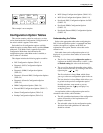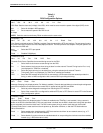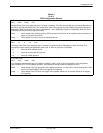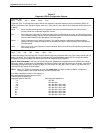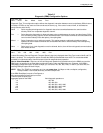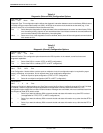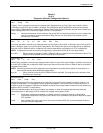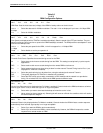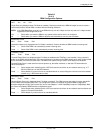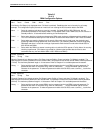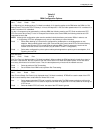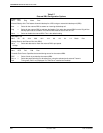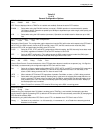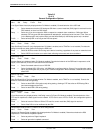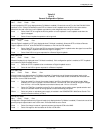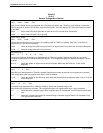
Configuring the Unit
5-133550-A2-GB20-20 December 1996
Table 5-6
(2 of 4)
DBM Configuration Options
Single Rate: Yes
Next Yes No Prev
Single Rate
(only displayed when Full Mode is enabled).
Determines whether the DBM will adjust its rate to resolve a
rate mismatch with a remote DBM or modem with the following limitations.
NOTE: If the DBM Rate(Kbps) is set to 2.4, the DBM will only train at 2.4 kbps and can only talk to a 2.4 kbps modem,
regardless of how Single Rate is set.
Yes — Select when you want the DBM to only operate at the rate for which it is configured.
No — Select when you want the DBM to adjust its rate downward to correct a rate mismatch.
AutoAnswer: Enab
Next Enab Disab Prev
Automatic Answer
(only displayed when Full Mode is enabled). Controls whether the DBM answers incoming calls.
Enab — Select if the DBM is to automatically answer incoming calls.
Disab — Select if the DBM is
not
to automatically answer incoming calls.
TxElasStor: Disab
Next Enab Disab Prev
Transmit Elastic Store
(only displayed when Full Mode is enabled and a TDM/Flex is not installed). Using a transmit
buffer on the DBM’s transmitted data (TXD) lead, serial data is clocked into the DBM’s elastic store using clock provided
by the extended circuit received clock lead. The DBM’s own system timing is used to clock data out of the buffer.
Transmit Elastic Store is reset each time the unit powers-up, the buffer overflows, or after the RTS lead makes an
Off-to-ON transition.
Enab — Select enable when interfacing with a DCE that receives clock from its own network source (e.g., a T1
MUX or DSU that is on the DDS network).
Disab — Select disable if you do not have an extended network or are providing the clock source to the extended
network (e.g., LADS with external clock).
RxElasStor: Disab
Next Enab Disab Prev
Receive Elastic Store
(only displayed when Full Mode is enabled). The DBM receives data using a receive data buffer
on the DBM’s received data (RXD) lead. This configuration option only supports single-port DBMs configured for
disruptive diagnostics (
Diag Type
is set to Disr) and no rate adaption – when
Rate(Kbps)
is equal to
PrtSp(Kbps
). Both
the control and tributary DBMs must be configured the same.
Enab — Select enable when interfacing with a DCE that receives clock from its own network source and does not
support a Transmit Elastic Store.
Disab — Select disable if you do not have an extended network.



